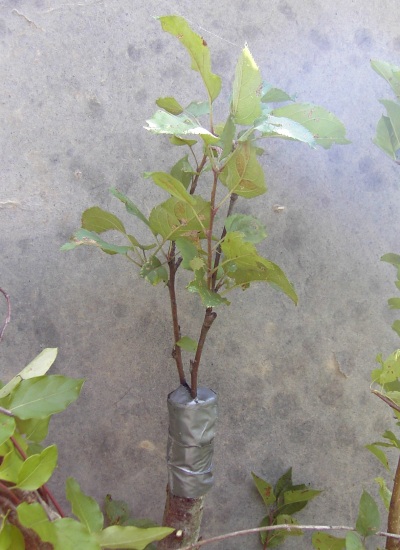What?! Monster potato is actually a gourd?
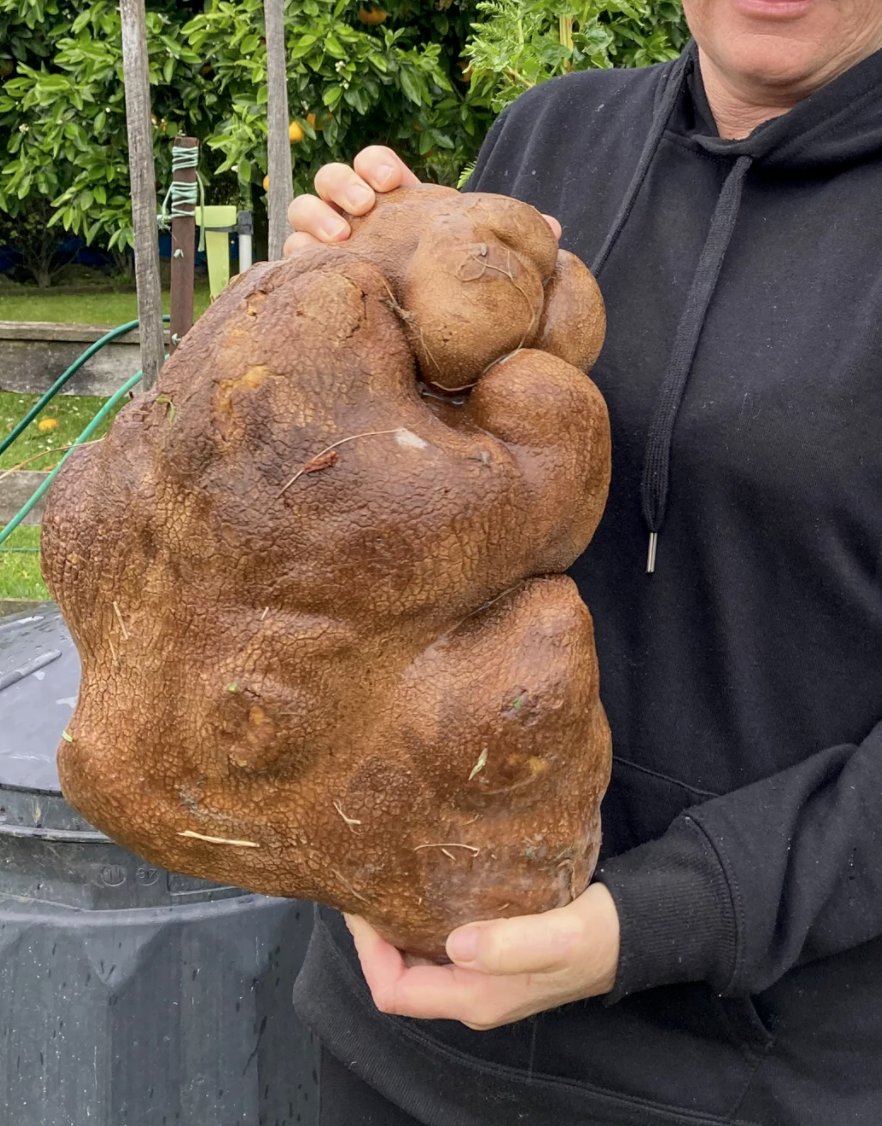
A New Zealand couple, Colin Craig-Brown and his wife, found a very large,17 pound potato-looking thing in their garden. They expected it to be a world record potato, but Guinness World Records’ lab testing on the DNA determined it was more related to gourds. But, the closest match to gourds they had grown in their garden was cucumbers. It’s hard to imagine it being a cucumber or a gourd. Maybe it’s some sort of cancer-like growth of a plant part. Maybe it’s some sort of gall induced by insects, viruses or other microorganisms. It crossed my mind that it could be something fungus-related to. It’s definitely something unusual, and I would say abnormal. Not likely harmful, just ugly and abnormal. It’s always possible the DNA was contaminated too. Maybe a fruit in the gourd/cucumber family got buried during growth, and the unusual environment of being underground caused this weird shape and size? What do you think?
https://www.yahoo.com/news/thought-unearthed-worlds-largest-potato-171340607.html
| Tagged: | CommentsDuct Tape Grafting
In case you didn’t know, most large-fruited, temperate orchard fruit varieties, such as apples, pears and peaches are propagated by grafting. Many plant varieties are propagated by cuttings, which clones the plant, making a another plant genetically identical to the original. For some tree fruits, grafting is more efficient in making more of a given fruit tree variety than it would be to root cuttings. If you have rootstock sapling trees to graft onto, grafting can save the tree years of growth required before fruiting, as opposed to cuttings. Also, having the choice of any rootstock of the same species, one can select a particularly cold-hardy, disease-resistant or vigorous specimen as the rootstock. Rootstocks can either be seedling trees or clones themselves, that is, cuttings taken from a known rootstock variety tree of the same species. Grafting is often also more often a successful procedure than rooting a hardwood cutting. Grafting has been done for thousands of years and is even mentioned in the Bible!
Grafting basics
You are putting a piece of one tree onto another and getting them to heal together, the rootstock tree accepting the scion as its own tissue and eventually seemlessly supporting it with water and nutrients.
Materials used for grafting traditionally include something to hold the graft together, like string/twine and some substance to seal the graft wound from the elements (keeps the graft from drying out and protects from infections).
In my early teens, I started experimenting with grafting apple trees. I found some of the commercial methods more difficult to make work and I realized it took hard-earned experience to have success with shield bud grafting and scion grafting on small saplings. However, i found the cleft graft much easier to make work, so that’s the method I used ever since. We had a few random seedling apple trees a few feet tall around the farm, so I would graft my twigs from my Golden Delicious tree onto them.
Grafting with duct tape
A couple years ago, I had no money and thought, I wonder how duct tape would work for grafting? It would do an okay job of sealing from the elements and would hole the graft together for months. It achieves the goals of traditional grafting materials all-in-one. And it was sort of fun to use duct tape for yet another odd use (along with fixing shoes, sealing windows, etc.).
I’ve only tried about four by now, but every graft worked well. You can see one of them pictured below. From now on, I’ll just keep some duct tape on hand, for this and many other needs. I guess you really can do anything with duct tape!
More info on grafting
Grafting Fruit Trees in the Home Orchard
| Tagged: | CommentsDragon Fruit!
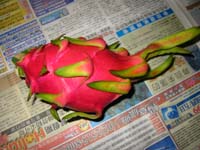 What is the “dragon fruit” (Wikipedia article) or pitahaya/pitaya?
What is the “dragon fruit” (Wikipedia article) or pitahaya/pitaya?
I first read about this exotic fruit in Ohio University’s library, about 1990. While in Taiwan for a couple months in 1995, I was delighted to see what looked like this fruit on “night market” stands on the street, along with other fruits I had only read about, such as lychee and mangosteen. The piles of fruit (which my Taiwanese friend called the “fire dragon fruit”) I saw were kind of a “hot” maroon/fuchsia color, with bright, triangular yellow scales. Of course I bought some. Turned out the flavor was kind of bland (which might have been the variety or growing conditions), but my fascination for the fruit grew regardless.
Many others are becoming fascinated, or even obsessed with this strange fruit. What is it about the pitahaya? Maybe the vibrant color of the fruit. Maybe the fascination of eating fruit from “jungle cactus”. The cactus plant itself is a real novelty. While in the wild, tropical forests (even in Florida), it vines through tree tops, with it’s 3 or more ribbed stems, pitahaya farmers will prune/train them into what looks like an alien, miniature tree.
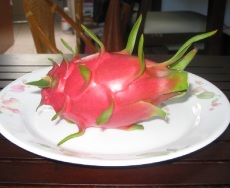 Whole Dragon Fruit |
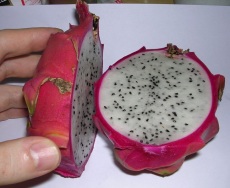 Dragon Fruit, Cut (white-fleshed) |
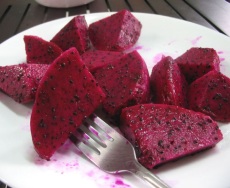 Red-Fleshed Dragon Fruit |
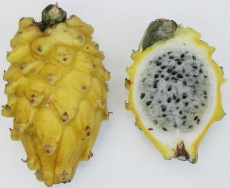 Yellow, “strawberry-pear” Selenicereus megalanthus Species |
